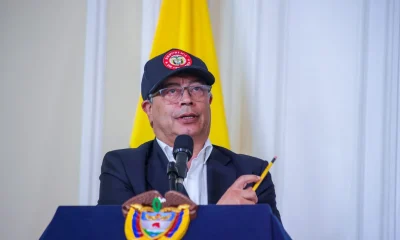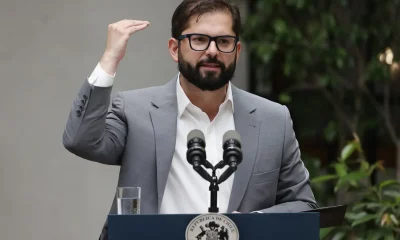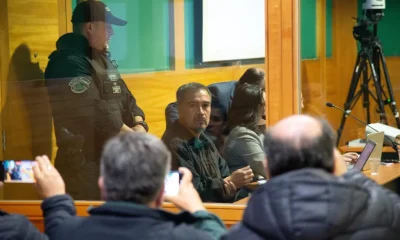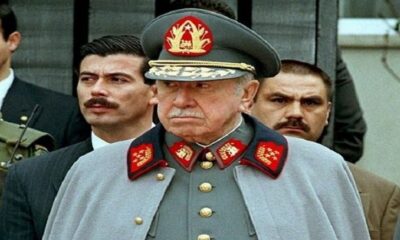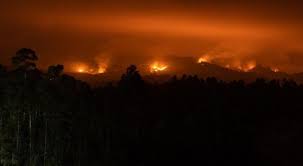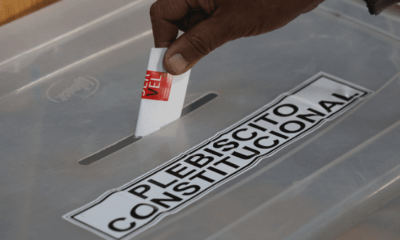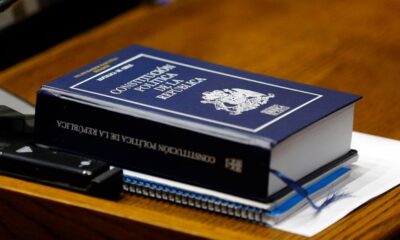International
The mother who decided to walk 1,300 kilometers in Chile to get an expensive medicine and save her son from a serious illness
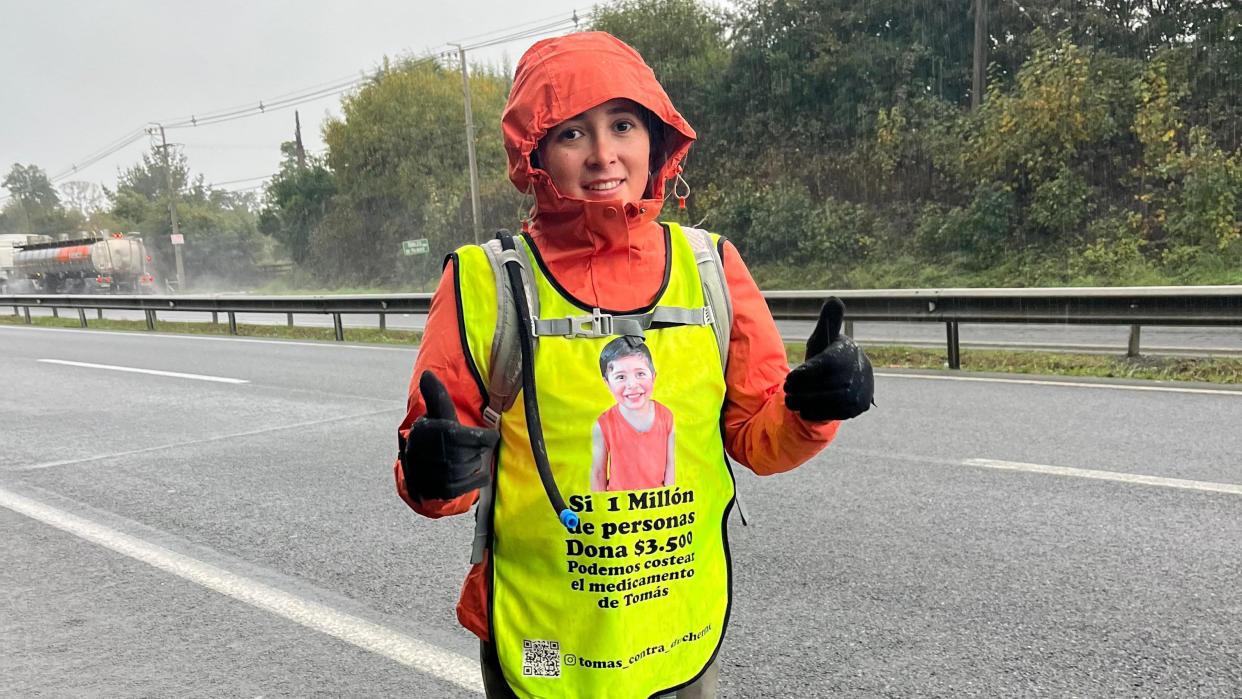
Walking the more than 1,300 kilometers that separate the commune of Ancud in Chiloé from the Palacio de la Moneda in Santiago in Chile may seem like a chimera to many.
Not so for the Chilean Camila Gómez, a mother who completes this challenge with the goal of raising 3.5 billion pesos (US$3.7 million) to buy a vital medicine for her five-year-old son and make visible the cause of patients with rare diseases in Chile.
Time is pressing. His son, Tomás Ross, suffers from Duchenne muscular dystrophy, a severe ailment that worsens quickly. If you do not receive the drug as soon as possible, it will be difficult to stop the disease.
“It is a very expensive medicine and a disease that in Chile has no opportunities, but there are opportunities abroad,” Gómez tells BBC Mundo.
Thousands of Chileans turned to Gómez’s case, whose determination went viral in the country.
The mother left Ancud on April 28 with Marcos Reyes, president of the Duchenne Families corporation in Chile, who also has two teenage children with the disease.
It was precisely Reyes who suggested the idea of the walk to Gómez.
“We walk for all the children and families who suffer from the disease. Time is running out,” Gómez said in an interview with the 24-hour national news.
The goal, in addition to raising funds and making their causes visible, is to get Chilean President Gabriel Boric to “bring a bill to Congress” that allows to improve the coverage of rare diseases in the country, as Reyes explains to BBC Mundo.
“He was born healthy, without any problem or complication, until at the age of four we realized that he had difficulty climbing stairs and performing some types of physical activity,” Gómez said on social networks.
“Until that moment there was no cure, but for a few months we have had a hope; in the United States the first drug was approved whose objective is to stop the progression of the disease,” Gómez continued.
This drug is marketed as elevidys and is administered intravenously in patients who, like Ross, are between four and five years old.
There are several types of muscular dystrophy, although Duchenne is the most common form and also one of the most severe.
The disease is unleashed due to a defective gene that results in the absence of dystrophin, a protein that helps keep the body’s cells intact.
Patients can develop problems when walking and running, fatigue, learning difficulties and cardiac and respiratory deficiencies due to the weakening of vital muscles in these functions.
The British national health services indicate that it normally affects young children and that people with this ailment usually live until they are 20 or 30 years old.
Gómez talks to BBC Mundo this Sunday, May 12, in “a little pause, while eating a little.”
It has already been more than two weeks of a journey that has about half left.
At the time of speaking, he is at the Púa toll booth, in the Araucanía Region, still more than 600 kilometers from the capital.
“This journey is crazy, but we think it’s turning out more than imagined,” says Gómez.
The first week was hard, but the mother says that with the passing of the days everything is getting easier.
“It’s impressive how the body adapts to the rhythm and it’s not so terrible anymore,” he says.
He is also helped by the emotional impulse he received by surprise last Friday, May 10 on the occasion of Mother’s Day.
Her son Tomás found her in the city of Temuco, accompanied by her father Alex Ross, to give her a hug, a bouquet of flowers and a recharge of encouragement.
“The boy knows that his mother gathers talks to find him a remedy, but he was only there for a while and turned to Chiloé. Because of the disease he has, he shouldn’t be cold,” Alex Ross tells BBC Mundo.
By May 10, the family had managed to raise more than half of the funds.
Gómez documents his tour on his social media accounts, where he receives thousands of messages of support, hundreds of thousands of views in his videos, the attention of the press and the company of other walkers who join in some sections of his tour.
“This has grown so much that I must help with the whole logistical issue: I look for accommodation, food, I assist them on the route with dry clothes, I look for podiatrists, kinesiologists and medicines,” says Alex Ross.
Camila Gómez and Marcos Reyes expect to arrive in La Moneda at the end of May, depending on the weather conditions.
A long way to make its causes visible that goes beyond the more than 1,300 kilometers that they will have traveled at the end of their journey.
International
U.S. and Mexico Reach Deal to Address Water Deficit Under 1944 Treaty

The United States and Mexico have reached an agreement to comply with current water obligations affecting U.S. farmers and ranchers and for Mexico to cover its water deficit to Texas under the 1944 Water Treaty, the U.S. Department of Agriculture said in a statement.
The department уточified that the agreement applies to both the current cycle and the water deficit from the previous cycle.
On Monday, U.S. President Donald Trump accused Mexico of failing to comply with the water-sharing treaty between the two countries, which requires the United States to deliver 1.85 billion cubic meters of water from the Colorado River, while Mexico must supply 432 million cubic meters from the Rio Grande.
Mexico is behind on its commitments. According to Washington, the country has accumulated a deficit of more than one billion cubic meters of water over the past five years.
“This violation is severely harming our beautiful crops and our livestock in Texas,” Trump wrote on Monday.
The Department of Agriculture said on Friday that Mexico had agreed to supply 250 million cubic meters of water starting next week and to work toward closing the shortfall.
Agriculture Secretary Brooke Rollins, quoted in the statement, said Mexico delivered more water in a single year than it had over the previous four years combined.
Trump has said that if Mexico continues to fall short of its obligations, the United States reserves the right to impose 5% tariffs on imported Mexican products.
Mexico’s Deputy Foreign Minister for North America, Roberto Velasco, said that a severe drought in 2022 and 2023prevented the country from meeting its commitments.
International
Several people shot in attack on Brown University campus

Several people were shot on Saturday in an attack on the campus of Brown University, in the northeastern United States, local police reported.
“Shelter in place and avoid the area until further notice,” the Providence Police Department urged in a post on X. Brown University is located in Providence, the capital of the state of Rhode Island.
U.S. President Donald Trump said on his social media platform Truth Social that he had been briefed on the situation and that the FBI was on the scene.
At 5:52 p.m. local time (11:52 p.m. GMT), Brown University said the situation was still “ongoing” and instructed students to remain sheltered until further notice.
After initially stating that the suspect had been taken into custody, Trump later posted a second message clarifying that local police had walked back that information. “The suspect has NOT been apprehended,” the U.S. president said.
International
Colombia says it would not reject Maduro asylum request as regional tensions escalate

The Colombian government stated on Thursday that it would have no reason to reject a potential asylum request from Venezuelan President Nicolás Maduro should he leave office, as regional tensions persist over the deployment of U.S. military forces in the Caribbean since August.
“In the current climate of tension, negotiations are necessary, and if the United States demands a transition or political change, that is something to be assessed. If such a transition results in him (Maduro) needing to live elsewhere or seek protection, Colombia would have no reason to deny it,” said Colombian Foreign Minister Rosa Villavicencio in an interview with Caracol Radio.
However, Villavicencio noted that it is unlikely Maduro would choose Colombia as a refuge. “I believe he would opt for someplace more distant and calmer,” she added.
Colombian President Gustavo Petro also commented on Venezuela’s situation on Wednesday, arguing that the country needs a “democratic revolution” rather than “inefficient repression.” His remarks followed the recent detention and passport cancellation of Cardinal Baltazar Porras at the Caracas airport.
“The Maduro government must understand that responding to external aggression requires more than military preparations; it requires a democratic revolution. A country is defended with more democracy, not more inefficient repression,” Petro wrote on X (formerly Twitter), in a rare public criticism of the Venezuelan leader.
Petro also called for a general amnesty for political opponents and reiterated his call for forming a broad transitional government to address Venezuela’s prolonged crisis.
Since September, U.S. military forces have destroyed more than 20 vessels allegedly carrying drugs in Caribbean and Pacific waters near Venezuela and Colombia, resulting in over 80 deaths.
U.S. President Donald Trump has repeatedly warned that attacks “inside Venezuela” will begin “soon,” while Maduro has urged Venezuelans to prepare for what he describes as an impending external aggression.
-

 International4 days ago
International4 days agoMexico City prepares for 13 million pilgrims at Basilica of Guadalupe
-

 International3 days ago
International3 days agoWashington declares State of Emergency as atmospheric river brings severe flooding
-

 International3 days ago
International3 days agoU.S. to require five-year social media history from tourists under Visa Waiver Program
-

 Central America4 days ago
Central America4 days agoHonduras’ electoral chief reports ongoing technical issues but says results remain intact
-

 Central America4 days ago
Central America4 days agoU.S. accuses Ortega regime of systematic human rights abuses in Nicaragua
-

 Central America4 days ago
Central America4 days agoU.S. finds no evidence of fraud in Honduras election despite delays
-

 International2 days ago
International2 days agoCuba battles out-of-control dengue and chikungunya epidemic as death toll rises to 44
-

 Central America3 days ago
Central America3 days agoOAS and EU urge honduran political actors to respect vote results and avoid unrest
-

 Central America2 days ago
Central America2 days agoHonduras election crisis deepens as CNE president denounces intimidation attempts
-

 International2 days ago
International2 days agoColombia says it would not reject Maduro asylum request as regional tensions escalate
-

 International20 hours ago
International20 hours agoSeveral people shot in attack on Brown University campus
-

 International2 days ago
International2 days agoEcuador on track for record violence as homicides hit highest level in Latin America again
-

 International3 days ago
International3 days agoSix ecuadorian soldiers jailed pending trial for alleged extrajudicial execution
-

 International17 hours ago
International17 hours agoU.S. and Mexico Reach Deal to Address Water Deficit Under 1944 Treaty

























